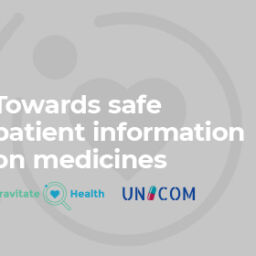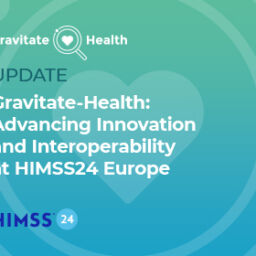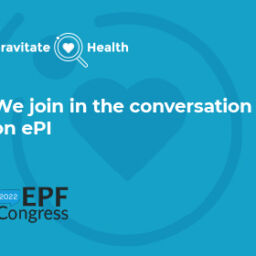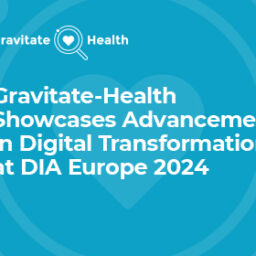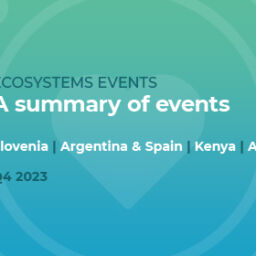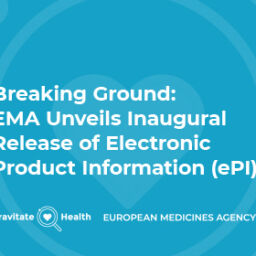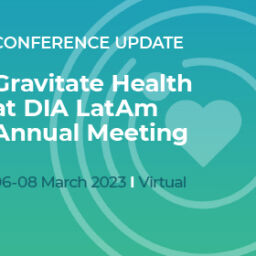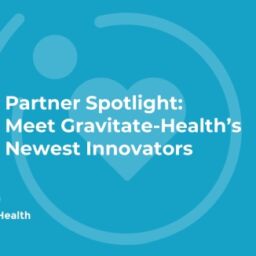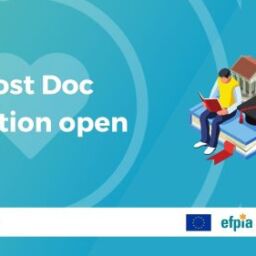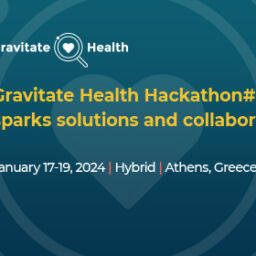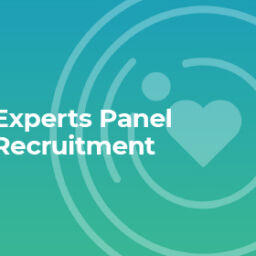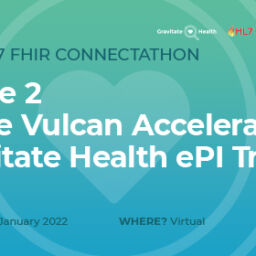Taking a look at the past 2.5 years of Gravitate Health - An interview with the Project Leads | Part 1
Q: What milestones and achievements stand out when looking back on the past two and a half years of Gravitate Health?
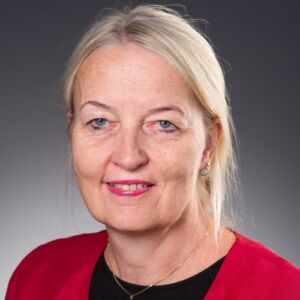
The initially developed Gravitate Health personas and short videos with Maria are illustrations of end user circumstances, giving input to considerations for design focus, and direction for important outputs we will try to deliver from the project. The set of shared representations or illustrations of G-lens services and the information resources we are working with helps discuss responsible personalization of information without compromising trust or accountability and set us up for further progress and next steps.
Such achievements would not have been possible without the interest and important contributions by our User Advisory Groups, the growing community of interested followers from different constituencies including the collaborating ecosystems, “tech community” (view the latest Meeting details here ) and the dedication and commitment from all the partners in the Gravitate Health consortium.

Alongside this, Gravitate Health has helped connect key initiatives and foster collaborations globally to build on these developments and drive quickly towards a global H7 FHIR ePI Standard which is completely aligned to the EU ePI Common Standard but can be adopted for global use [view the Gravitate Health/EMA shared statement here.] The speed of progress in this area has been very impressive and sets the stage for a harmonized global ePI implementation.
Something that also stands out is the external presence and visibility that Gravitate Health has been able to achieve over the last 3 years. We have had many opportunities to participate at key conferences and events, for example at DIA conferences globally as well as technically focused events such as EUROVulcan and have had opportunities to engage with key stakeholders including regulators in the US, EU, Japan and beyond.
Increasingly now we are hosting our own external-facing events in order to engage wider stakeholder networks and align efforts to accelerate adoption and use of ePI. level of interest in the project overall from different communities has been exciting to see, and our philosophy has very much been to embrace this and actively explore the opportunities it offers.
Q: How has Gravitate Health evolved and grown since it began?
ANNE: As highlighted above, our achievements so far are examples of growth that allow Gravitate Health to evolve as we implement the action. The interoperability resources and being part of communities evolving such resources is an example of joining initiatives where early outputs will be important for further growth in Gravitate Health. We are also at the look-out for other initiatives.
It will be key to create broader awareness and demonstrate opportunities in combining health knowledge from trusted sources and subset of personal health data (respectful of user preferences for sharing) that provide patients and their support network with resources that benefit personal health, self-care, activities during active treatment or self-management.
We have joined and will continue to consider initiatives in Europe and globally that will help us advance the project vision for equipping engaged and empowered citizens managing their personal health matters, and specifically initiative that can translate into improved adherence to treatment, safer use of medicines and quality of life.
GIOVANNA: In one very practical sense, the Gravitate Health consortium has grown via the inclusion of a number of new partners… These include on the public side PredictBy, a leading organisation in the field of health economics and health technology assessment, Oslo University Hospital, who strengthen our clinical and patient engagement expertise, as well as University College Dublin, a leading research university.
We also have seen increased investment in the project on the industry side, with the pharmaceutical company Janssen joining recently. As well as being a very tangible reflection of the strong interest in the project, engaging new partners in this way increases the expertise and capabilities of the consortium as a whole, strengthening the work that we are doing and helping us deliver on our goals and more.
Alongside this we have established a range of other partnerships and channels for engagement with different end-user communities, leveraging areas of mutual benefit to drive progress and alignment.
One point to note though is that whilst we have continued to grow and evolve over the last few years, the underlying vision for the project remains unchanged – namely to strive towards accessible, understandable health information that meets the individual needs of the user.
Q: In what ways has Gravitate Health's initial vision transformed the health sector through its experience over the past three years?
ANNE: We need to acknowledge that the transformation in the health sector is multifaceted and extremely complex, involving numerous actors, interests, and perspectives that must converge.
Gravitate Health‘s vision to equip and engage users, the citizens, with relevant health information from trusted sources is a bold ambition. Our contribution to this transformation lies in how patients and their support networks can enjoy improved access to and understanding of information for self-care, including prevention, early intervention, activities during active treatment, or effective self-management for the best possible outcomes of ongoing therapy.
To achieve this, Gravitate Health focuses on creating the necessary building blocks for user-friendly information services and health resources that strengthen and prepare real support systems. These systems appreciate contributions by patients according to their interests, capabilities, and circumstances. Our collaborations across diverse user and stakeholder constituencies, and contributions such as the approved FHIR ePI IG, serve as good examples of building blocks necessary for healthcare transformation.
However, the real breakthrough will come with further uptake, advancement, and utilization, which can drive the change we aim for. The ultimate test of our contribution to healthcare transformation will be seen in the uptake by citizens and their sustained use over time.
GIOVANNA: While Gravitate Health is still a work in progress, it’s crucial to recognize that in the context of the long-term transformation of healthcare, the HL7 FHIR interoperability standard enjoys widespread adoption globally. Consequently, an interoperable, FHIR-based ePI has the potential to provide vital information for various healthcare and regulatory use cases.
The foundational work undertaken by Gravitate Health in this domain can position ePI at the forefront of a global ‘digital health’ approach, creating exciting opportunities for the future and unlocking the true value of ePI for patients.
By placing emphasis on this aspect, we can strive towards evolving ePI to incorporate the necessary capabilities, such as a higher level of structuring, to enable a more personalized approach. Additionally, we can ensure that proven, user-centric digital tools are readily available to facilitate its delivery.
“Gravitate Health's vision to equip and engage users, the citizens, with relevant health information from trusted sources is a bold ambition. Our contribution lies in how patients and their support networks can enjoy improved access to and understanding of information for self-care.”
~ Anne Moen
“The foundational work undertaken by Gravitate Health in the domain of interoperability can position ePI at the forefront of a global 'digital health' approach, creating exciting opportunities for the future and unlocking the true value of ePI for patients.”
~ Giovanna Ferrari



